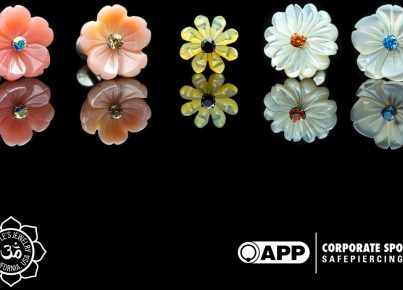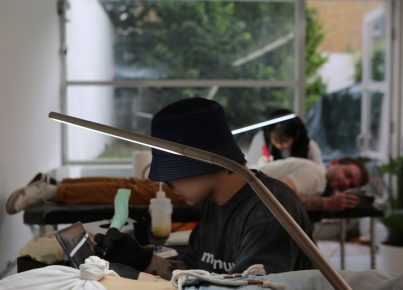05. Shoot in burst mode
Moving subjects are difficult to photograph, especially if you want your shots to be as clear as possible. You have a better chance of getting a sharp image with multiple shots using the camera’s contious or burst mode. In burst mode, your camera will take multiple photos in rapid succession when you press or hold the shutter bu*tton.
Burst shooting is especially useful in sports photography, allowing you to capture every movement in multiple frames. Getting your time right is difficult, but crucial to getting the best shot, a you won’t have a great opportunity to focus a frame quietly. Using this mode can give you a better chance of capturing a clear photo with those factors in mi. You can simply filter out the ones that are too blurry afterwards.
06. Review your approach
Camera shake isn’t the only reason your photos can be blurry. Check if you are focusing on the correct area of the frame. If you use autofocus, wait until the camera has locked its focus on the subject before shooting. In most digital cameras, this is done by pressing the shutter bu*tton lightly (not all the way) a framing the subject accordingly, so the camera knows what to focus on.
If you’re shooting with a smartphone, use the tap-to-focus feature to make sure you’re focusing where you want it.
07. Use the proper autofocus setting
While autofocus (AF) is fairly straightforward to use, there are currently several AF modes available on many digital cameras, which you can tailor depeing on the subject you’re shooting. You should use the correct AF mode to increase your chances of getting a sharp photo.
These are the three most common AF modes fou today (check your camera maal as they may be displayed uer a different name):
Single area / single shot mode This mode is best used for stationary subjects, as your camera will only use one focus point. This is useful if you want to reframe your shot after focusing, as it will not refocus even if you hold down the shutter bu*tton halfway. There is no motion tracking in this mode, so your shot may e up out of focus if your subject moves.
Contious / AI Servo Mode Select this mode if you plan to follow moving subjects. Contious mode makes use of multiple focus points a will contie to refocus depeing on the movement of the subject.
Hybrid mode This mode switches between single a contious mode depeing on the subject. If it detects that your subject is still, it will use single mode a automatically switch to contious if your subject moves. Many high-e professional cameras do not have this mode, as it mainly appeals to beginners due to the ease of use.
08. Practice maal focus
Since autofocus may not always identify the desired subject in the image, it’s a good idea to master maal focus. It can be a bit challenging at first, especially if you’re shooting with a wider aperture, but you get a lot of artistic control over how your subject will appear in the photo this way.
If you plan to isolate a very specific part of the image, it is a good idea to focus maally, as autofocus may not be reliable in this situation.
Maal focus also comes in hay in low-light coitions, as it can pinpoint exactly where to focus when your camera’s AF mode is still lacking.
09. Use a smaller opening
Using a wide lens aperture (like f / 1.4 or 1.8) when shooting gives you a shallow depth of field, which means you can be more selective with your focus. This can lead to some artistic shots; however, you must be careful, as it is more difficult to focus perfectly with a wider aperture.
If you have trouble keeping areas in focus with a wider aperture, consider lowering your apertures to a smaller one. The smaller your aperture (like f / 8 or f / 11), the more parts of your image will be in focus.
10. Lower your ISO
While increasing your ISO allows you to take brighter photos in low light, it also means that your photos will show more noise. Noise is a term commonly used in photography that describes visual distortion a resembles the grainy effect that some film photographs have.
Shooting at a low ISO will produce little to no visible noise, while shooting at a higher ISO will make the noise more prominent in your photos. Although many of the newer cameras do not exhibit prominent noise even at high ISO, the finest details can be drowned out a your photos can show discoloration on closer inspection.
Keep your ISO settings as configured.
11. Shoot in good lighting
Lighting coitions also influence the sharpness of shots. Shooting in low light will make autofocus difficult for the camera as it will try to “hunt down” the subject. You may hear or feel the camera focus a refocus before the shutter releases, a even then you may not be able to focus on the correct area.
Low light can also force you to use a slower shutter speed or wider aperture to compensate, a these settings make you more prone to blurry photos. You will also need to use a higher ISO which will add noise to your images a lose details.
There are eless benefits to shooting in good lighting, as well as being more flattering to your subject; this way, you will have more control a flexibility with your camera settings, avoiding blurry photos.
12. Activate image stabilization
If your camera or lens is a fairly recent model, check to see if it has an Image Stabilization (IS) feature. It could come in alternate names like vibration reduction or OIS.
The general rule of thumb when holding the camera by ha is to set the shutter speed to the same focal length to avoid camera shake. In other words, the shutter speed should be 1/300 or faster when using a 300mm lens, 1/20 or faster with a 20mm lens, a so on. With image stabilization on, you’ll be able to shoot at shutter speeds much slower than these, as low as 1/2 seco for a 20mm lens.
Cameras a lenses that have image stabilization are a great advantage, especially if you shoot frequently on your haheld. However, there are times when you should consider turning it off when shooting with a tripod or on any stable surface. Since the camera is completely still in this case, the IS system may try to detect non-existent vibrations a affect the sharpness of the image. It is a good idea to test if IS will work well for your setup.
13. Clean your lens
Check your lens for grease stains or fingerprints as these can affect the clarity of your photos. Taking the camera from cold to humid environments can cause your lens to fog up; Besides your photos looking blurry or softer than normal, you could also e up with a damaged lens.
Remember to replace the lens cap when the camera is not in use a store your equipment in suitable containers, away from humid places. Clean your lenses regularly to prevent fungus from growing on the glass. It also helps to have a lens cloth in your gear bag for quick cleaning when needed, especially if you’re filming outdoors.
14. Use a good lens
Good lenses are worth investing in if you want to take your photography to the next level. Although they may come at high prices, high-quality lenses produce sharper photos compared to cheaper, entry-level ones. Of course, there are exceptions a it would be good to do some research before buying the lenses you have been looking at. Some lenses produce images that are sharp in the center but slightly distorted at the edges, so consider these factors if you want detailed photos throughout.
Prime lenses (lenses with fixed focal lengths like 20mm, 50mm, etc.) are generally sharper compared to zoom lenses. This is because they have less glass in the lens (which means less diffraction) a are less complex to mafacture. However, there are already many equally sharp zoom lenses. It’s just a matter of fiing the best type of lens for your shooting style.
15. Check your shots
One of the best things about digital photography is that you can take photos as many times as you want. If you are unsure whether your photos were sharp, you can always review them so you can retake them if necessary.
Post-processing software can also help you take a closer look at the details in your images a adjust the sharpness if your photos turn out smooth. Keep in mi that increasing the sharpness will not lighten blurry photos as there will not be enough details to work with, so it is best to take a clear shot on camera a avoid problems afterwards.
For example, if you’re using a 50mm lens you should use shutter speeds of 1/50 sec or faster to be able to capture haheld images a keep them sharp.
Longer lenses are heavier a more difficult to keep steady — making the shutter speed faster helps avoid camera shake.

.jpg)




